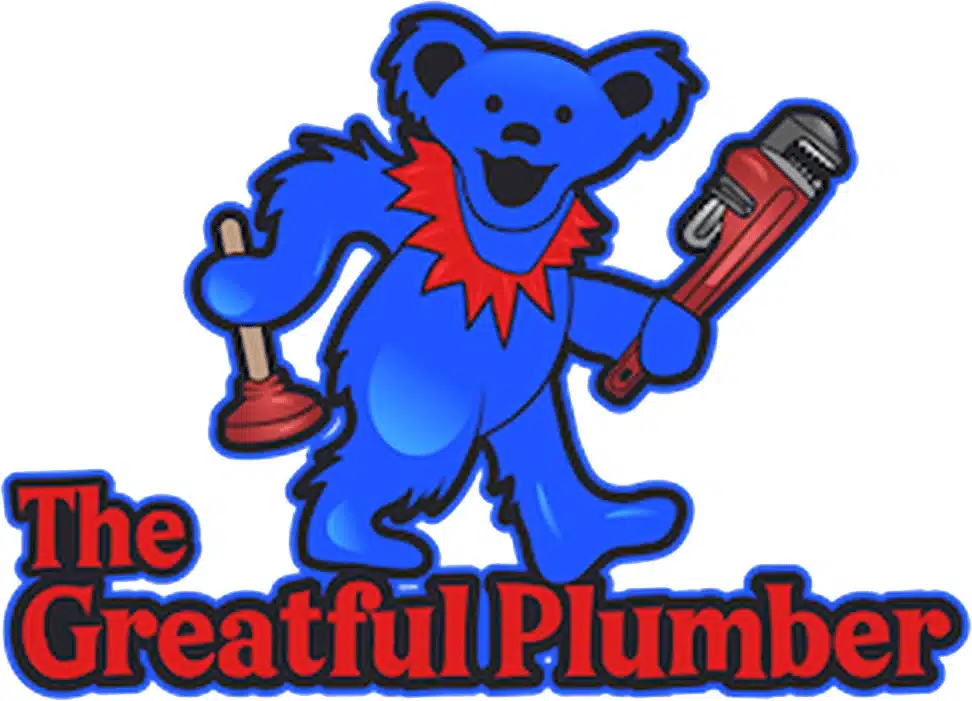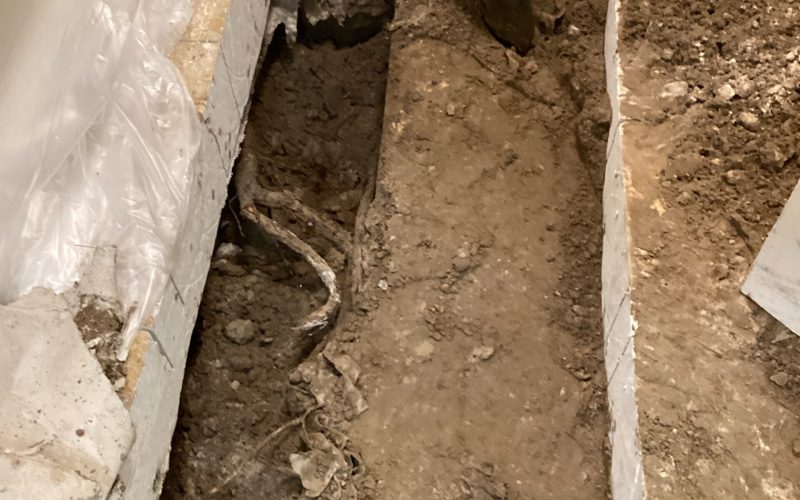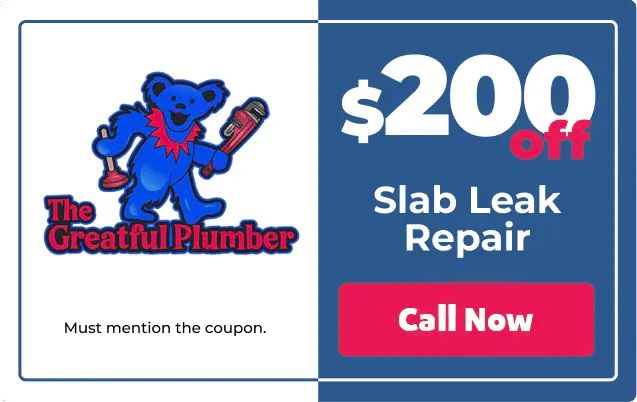The Hidden Disaster That’s Coming for Your Business
While hurricanes in Florida and wildfires in California have pushed disaster planning to the corporate level, there’s one disaster that rarely makes the top 10 risk list: plumbing failures. Yet when they strike, they can shut down or significantly interrupt your entire operation.
“The most expensive part of any plumbing failure is the business interruption.”
Anyone with P&L responsibility
Here’s the uncomfortable truth: a plumbing disaster is coming. We can’t tell you when or how severe it’ll be, but it’s not a matter of if, it’s a matter of when. And when it happens, property and facility managers are often left scrambling without a plan.
Why Plumbing Disasters Hit Harder Than You Think
A catastrophic failure is actually easier to quantify than smaller plumbing issues. But what’s the real cost of:
- Lost reputation?
- A customer who leaves for a competitor?
- Employees requesting to leave or work from alternative locations?
- Inventory damage from sewage or water?
The Restaurant Risk Factor and Those Pesky “Bad Actors”
Restaurants face particularly high stakes. Their volume peaks during meal times create system loads that can hasten failures. We’ve literally recovered green army men from restaurant drains, and yes, the one with the metal detector is especially troublesome! But that’s just the tip of the iceberg. Over the years, we’ve pulled out everything from children’s toys to jewelry, hair accessories, and even cell phones. Each “bad actor” creates a blockage point that can cascade into a complete system failure.
Grease traps are regulated by health departments and require regular maintenance contracts. Neglect them at your peril. A failed grease trap doesn’t just create a backup, it creates a health code violation that can shut you down immediately. The fines can run into thousands of dollars, but the real cost is lost revenue during closure. Even a few days of closure during peak periods can mean tens of thousands in lost sales.
The timing of restaurant failures is particularly cruel. Systems typically fail during the busiest periods when stress is highest: Friday night dinner rush, weekend brunch, or holiday celebrations. That’s when you need your systems most and when failure costs the most.
Industry-Specific Plumbing Disaster Risks
Healthcare Facilities: Zero Tolerance for Downtime
Hospitals and medical facilities face the highest stakes when plumbing fails. Patient care cannot stop for a backup, and infection control requirements make any sewage exposure a critical emergency. Operating rooms, patient rooms, and laboratories all have specialized drainage requirements. A single backup can contaminate entire floors and force patient evacuations.
The regulatory implications are severe—health departments, CMS, and Joint Commission all have strict requirements for facility cleanliness and function. A plumbing disaster can trigger inspection visits that reveal other compliance issues, creating a cascade of problems far beyond the original pipe failure.
Retail and Customer-Facing Businesses
Shopping centers and retail stores face immediate reputation damage when plumbing fails. Customers won’t return to a store that smells like sewage, and social media amplifies negative experiences instantly. Black Friday or holiday shopping season failures can devastate annual revenue targets.
Inventory damage in retail environments can be catastrophic. Water and sewage don’t discriminate between clearance items and premium merchandise. Insurance claims take months to process while you’re stuck with damaged inventory and lost sales.
Office Buildings: The Hidden Productivity Killer
Corporate offices might seem lower risk, but plumbing failures create unique challenges. Employee productivity plummets when restrooms are unusable or areas smell of sewage. Many employees will simply leave rather than work in unpleasant conditions, effectively shutting down operations even if you technically remain “open.”
Multi-tenant buildings face additional complexity—one tenant’s plumbing problem can affect others, creating liability issues and finger-pointing about responsibility and costs.
The 4 Steps to Master Plumbing Disaster Recovery
Step 1: Create Your Emergency Plan
WE NEED A PLAN. IT DOESN’T NEED TO BE A GOOD ONE, JUST A PLAN.
Emergency planning gets tricky for larger organizations operating across multiple jurisdictions because plumbing codes vary by region. But here’s an insider secret: temperature correlates more with failure causes than specific geography.
Regional Risk Factors
The Northeast: Winter Freezing
Winter pipe freezing is your nemesis. When pipes freeze and crack, failure can happen immediately when they thaw or surprise you later. The good news? Pipes only crack if water can’t expand as it freezes. Partially full pipes have expansion room, which is why specialized plumbing devices create expansion space to prevent damage.
Key Freezing Factors:
- Temperature: Below 32°F pipes freeze slowly; below 20°F they freeze faster, especially if unprotected
- Insulation: Proper insulation doubles the time to freeze compared to exposed pipes
- Pipe material: Metal transfers cold down the line; plastic (PVC & PEX) doesn’t. PEX is more flexible and less likely to rupture from thermal expansion
- Water movement: Still water freezes faster, leave faucets dripping during extreme cold
The South: A Perfect Storm of Plumbing Challenges
The South faces a unique combination of factors that make plumbing disasters particularly devastating. Hurricanes don’t just bring wind damage, they bring flooding that can overwhelm entire sewer systems and contaminate fresh water supplies. When Hurricane Ian hit Florida, countless businesses faced not just storm damage but complete plumbing system failures that kept them closed for weeks.
Hard water throughout the region accelerates pipe calcification, creating buildup that restricts flow and increases pressure until pipes burst. This is a slow-motion disaster that many facility managers don’t see coming until it’s too late. The mineral deposits essentially turn your pipes into time bombs.
The high water table across Florida and much of the coastal South means that any excavation or repair work becomes exponentially more complicated and expensive. Ground water seepage can turn a simple pipe replacement into a major engineering project. Additionally, the high water table puts constant pressure on sewer systems, making backups more likely during heavy rains, which happen frequently in the subtropical climate.
Older infrastructure in historic Southern cities compounds these problems. Many buildings in places like New Orleans, Charleston, and Savannah have plumbing systems that predate modern codes and materials. Cast iron pipes installed 60-80 years ago are reaching the end of their useful life, and the combination of age, humidity, and ground conditions creates a recipe for systematic failures.
Seasonal tourism spikes in Florida create additional stress on plumbing systems. Restaurants and hotels that handle normal loads during off-season can be overwhelmed when tourist crowds arrive. The same grease traps and sewer connections that work fine most of the year can fail catastrophically during peak demand.
Step 2: Know Your Systems and Emergency Responses
Remember: there are two systems at work, fresh water in and soiled water out. Assess which type of problem you’re facing, because each requires a different response plan.
Water Service Emergency Checklist
- Where are the water shut-off valves?
- Have they been tested? Do they work?
- Are they accessible with someone available who knows how to operate them?
Sewage Emergency Responses
- Pressure relief: While not recommended, outdoor cleanout caps can be removed to alleviate pressure and stop building backups (but be aware of fines for sewage flowing into city storm systems)
- Localize the problem: Is the entire system failing or just one area? Downstream fixtures might still function if it’s a localized clog
Critical timing: Once you’ve assessed the situation and limited further damage, call your plumber and cleanup service immediately. Water and sewage become exponentially more problematic the longer they linger.
🚨 If you don’t already know who you’re calling, you’re already late!
Step 3: Execute Your Contingency Plan
Business continuity essential questions to address:
- Shutdown decision: Do you need to close completely or can you remain operational?
- Containment: Can you separate affected areas with tarps or section closures?
- Remote work: Can employees work from home?
- Inventory protection: Can stock be relocated within the facility?
- Sanitation backup: Where can you place porta-potties? (They need special venting indoors to control odor)
Step 4: Professional Remediation
Assessment First
Get evaluations from licensed and insured professionals. There’s no worse scenario than hiring an unqualified plumber who makes everything worse.
Budget and Approvals
Secure necessary funding given the urgency. Delays cost exponentially more.
Repair Timeline Questions
- Can it be completed immediately? All day? Multiple days?
- Can work be scheduled overnight or weekends to minimize impact?
Cleanup Strategy
- Do you have onsite cleaning crew capacity?
- For major sewer backups, hire experienced remediation vendors
The Prevention Reality Check: Understanding System Failures
Plumbing systems are designed to last 50 years, and many exceed that. But here’s the catch: when one section fails, others are right behind it. They’re all the same age and have endured identical conditions.
The Cascading Failure Reality
This isn’t just theory, it’s the harsh reality of aging infrastructure. When you experience your first major pipe failure, don’t think of it as an isolated incident. Think of it as the first domino to fall. The section that just failed has been your canary in the coal mine, warning you that the entire system is approaching the end of its useful life.
We see this pattern repeatedly: a business fixes one major pipe failure, then six months later another section fails, then another. Each “emergency” repair costs 3-5 times more than planned maintenance would have cost. That’s why sometimes a band-aid fix is actually the smart choice. It buys you time to plan and budget for systematic replacement rather than lurching from crisis to crisis.
The age factor is critical. A building with plumbing installed in 1970 doesn’t just have one old pipe, it has an entire system of aging components. The same water conditions, pressure changes, and environmental factors that caused your first failure are working on every other pipe in your building right now.
Warning Signs: Your System Is Talking to You
Smart facility managers learn to read the warning signs before catastrophic failures occur:
Water pressure changes: Gradual decreases often indicate buildup or partial blockages developing throughout the system.
Recurring minor clogs: If you’re calling for drain cleaning more frequently, your pipes are telling you that capacity is diminishing.
Water discoloration: Rusty or cloudy water signals internal pipe deterioration that will eventually lead to failures.
Unusual sounds: Banging, gurgling, or whistling in pipes indicates pressure issues or partial blockages that will worsen over time.
Unexplained water bill increases: Small leaks that haven’t surfaced yet will show up in your usage patterns before they become visible problems.
Proactive Assessment Programs
The proactive approach that prevents disasters involves systematic evaluation rather than reactive repairs. This means scheduling professional assessments based on your building’s age and risk factors, not waiting until problems appear.
For buildings 20-30 years old: Annual camera inspections of main lines can spot developing issues before they become emergencies. The cost of a $500 inspection versus a $50,000 emergency repair makes this decision obvious.
For buildings 30+ years old: Consider comprehensive plumbing assessments every 2-3 years. These evaluations can help you plan systematic upgrades during convenient times rather than emergency replacements during the worst possible moments.
High-risk periods: Schedule assessments before your busy seasons. A restaurant should evaluate systems before summer tourist season, not during it. An office building should check systems before the holidays when finding emergency contractors becomes nearly impossible.
The replacement planning reality is that once you start seeing failures, you’re typically looking at 5-10 years of systematic upgrades. Businesses that plan for this reality fare much better than those that hope each repair will be their last.
Smart Technology Solutions
Modern water leak detection systems can prevent disasters before they start. Smart sensors placed near water heaters, under sinks, and at key junction points can alert you to leaks within minutes instead of days. These systems typically cost $500-$2,000 to install but can prevent tens of thousands in damage.
Automatic water shut-off valves are game-changers for unoccupied buildings or after-hours failures. When sensors detect unusual flow patterns, the system automatically shuts off water supply, limiting damage until repairs can begin. For businesses with valuable inventory or equipment, this technology pays for itself with the first prevented disaster.
Grease trap monitoring systems for restaurants provide real-time alerts when traps need service. Instead of relying on arbitrary schedules, you maintain based on actual usage patterns. This prevents both overflows and unnecessary service calls.
Preventive Maintenance Programs
A proper preventive maintenance schedule should include:
- Monthly: Visual inspections of exposed pipes, shut-off valves, and water pressure
- Quarterly: Grease trap service (restaurants), drain cleaning for high-use areas
- Annually: Camera inspection of main sewer lines, water heater inspection, full system pressure testing
- Every 3-5 years: Complete plumbing system assessment for buildings over 20 years old
The maintenance contract reality: Many businesses skip preventive maintenance to save money, then pay 5-10 times more when systems fail. A monthly maintenance contract costing $200-500 can prevent disasters costing $50,000+.
Sometimes a band-aid fix is your best option to limit business impact while scheduling major repairs at convenient times. But don’t ignore the writing on the wall. The value of prevention cannot be minimized.
Insurance and Legal Considerations
Insurance coverage for plumbing disasters is more complex than most business owners realize. Standard commercial property policies often exclude:
- Gradual leaks that develop over time
- Damage from lack of maintenance
- Business interruption from infrastructure failures
- Mold damage that develops after water incidents
Additional coverage you should consider:
- Equipment breakdown insurance for water heaters and pumps
- Business interruption insurance with specific plumbing disaster riders
- Environmental cleanup coverage for sewage contamination
Legal liability extends beyond your property. If your plumbing failure affects neighboring businesses or creates environmental contamination, you could face lawsuits that dwarf the original repair costs. Grease trap overflows that contaminate shared areas or affect other tenants can result in substantial legal settlements.
Pro tip: Older systems should be proactively checked periodically. This alerts facility managers to potential future failures before they become disasters.
Ready to create your plumbing disaster plan? Don’t wait until you’re ankle deep in problems. The best time to establish relationships with plumbers and remediation companies is before you need them, not while you’re frantically Googling at 2 AM with water rising.










